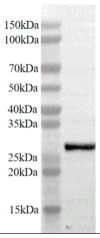Establishment of a Direct Competitive ELISA for Camel FGF21 Detection
- PMID: 40005931
- PMCID: PMC11861717
- DOI: 10.3390/vetsci12020170
Establishment of a Direct Competitive ELISA for Camel FGF21 Detection
Abstract
Camels, with the ability to survive under drought and chronic hunger, developed exceptional efficient lipid reserves and energy substance metabolic characteristics. Fibroblast growth factor (FGF) 21 is a hormone that regulates important metabolic pathways and energy homeostasis. However, the absence of a specific detection method for camel FGF21 impacts research on camels' metabolic regulation. This study established a direct competition ELISA assay for detecting camel FGF21. Camel FGF21 antigen was expressed and purified through prokaryotic expression system. Polyclonal antibody was produced and purified via immunizing guinea pigs and affinity chromatography assay. Biotin-labeled FGF21 was synthesized artificially as the competitive antigen. After the determination of optimal conditions, including the working concentrations of the antibody and antigen, blocking solution, dilution buffer, and the competition reaction time, the standard curve with a typical "S" shape was generated using GraphPad Prism. The regression equation was Y = 0.1111 + (X-0.7894) × (2.162 - 0.1111)/(X-0.7894 + 15.76-0.7894), with the IC50 15.59 ng/mL, the limit of detection (LOD) 0.024 ng/mL, the limit of quantification (LOQ) 1.861 ng/mL, and the linear range IC20~IC80 2.0~119.22 ng/mL. The verification test showed that the recovery rate ranged from 91.34% to 98.9%, and the coefficients of variation for the intra- and inter-plate both were less than 10%, indicating that the ELISA method had high accuracy, good repeatability, and high stability. In addition, this ELISA method had the potential to detect FGF21 secretion levels in other species such as mouse, human, and pig. This study provided a rapid quantitative tool for conducting research on the FGF21 factor in camels.
Keywords: FGF21; affinity chromatography purification; camel; direct competition ELISA; polyclonal antibody; prokaryotic expression.
Conflict of interest statement
The authors declare no conflicts of interest. The funders had no role in the design of the study; in the collection, analyses, or interpretation of the data; in the writing of the manuscript; or in the decision to publish the results.
Figures







Similar articles
-
Localization of FGF21 Protein and Lipid Metabolism-Related Genes in Camels.Life (Basel). 2023 Feb 3;13(2):432. doi: 10.3390/life13020432. Life (Basel). 2023. PMID: 36836789 Free PMC article.
-
Analysis of Functional Promoter of Camel FGF21 Gene and Identification of Small Compounds Targeting FGF21 Protein.Vet Sci. 2023 Jul 10;10(7):452. doi: 10.3390/vetsci10070452. Vet Sci. 2023. PMID: 37505857 Free PMC article.
-
A Novel Designed Sandwich ELISA for the Detection of Echinococcus granulosus Antigen in Camels for Diagnosis of Cystic Echinococcosis.Trop Med Infect Dis. 2023 Aug 6;8(8):400. doi: 10.3390/tropicalmed8080400. Trop Med Infect Dis. 2023. PMID: 37624338 Free PMC article.
-
Fibroblast growth factor 21 and bone homeostasis.Biomed J. 2023 Aug;46(4):100548. doi: 10.1016/j.bj.2022.07.002. Epub 2022 Jul 16. Biomed J. 2023. PMID: 35850479 Free PMC article. Review.
-
Biological role, clinical significance, and therapeutic possibilities of the recently discovered metabolic hormone fibroblastic growth factor 21.Eur J Endocrinol. 2012 Sep;167(3):301-9. doi: 10.1530/EJE-12-0357. Epub 2012 Jun 27. Eur J Endocrinol. 2012. PMID: 22740503 Review.
References
LinkOut - more resources
Full Text Sources

